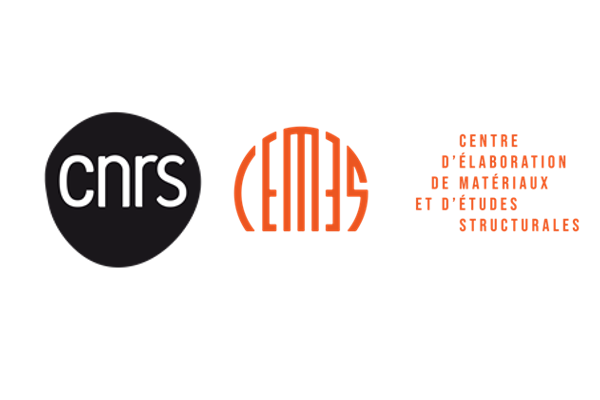Post-Doc Position at CEMES-CNRS Toulouse: Advanced TEM for Phase Change Memories and neuromorphic devices using GeSbTe alloys

The CEMES-CNRS (Toulouse, France), in collaboration with STMicroelectronics, offers a PostDoc position in the field of Advanced TEM for Phase Change Memories and neuromorphic devices using GeSbTe alloys. More details below!
The CEMES-CNRS (Toulouse, France) in collaboration with STMicroelectronics offers a PostDoc position in the field of Advanced TEM for Phase Change Memories and neuromorphic devices using GeSbTe alloys.
This position, opening from October 2022, will be a first contract of 12 months, renewable up to 24 months.
Context
Phase Change Memory (PCM) appears as a promising alternative technology to overcome the limitations of flash memories. Phase Change Memories employ thin films of chalcogenide materials, a GeSbTe (GST) alloy, that is locally and reversibly switched between its crystalline and amorphous phase states using heating pulses (i.e. through electrical pulses). Information is contained in the pronounced difference of electrical conductivity between crystalline and amorphous phases of the GeSbTe alloy.
Recent works, including ours, have demonstrated that beyond digital (2 bits) memories, these alloys can also be used to fabricate multi-level memories (several bits) remembering their “history”, i.e. able to reproduce synaptic activity and offer devices for artificial intelligence.
Despite huge potentiality, developing and industrializing PCMs for advanced nodes require in depth understanding of the physical phenomena involved in the switching and storage mechanisms, this in the frame of scaled down dimensions. At the moment, most IC manufacturers are exploring the potential of such materials, in collaboration with academics, and this project is no exception.
A simplified scheme of the cell architecture is shown in the figure and TEM view below. It includes the heater (TiSiN), the phase change material (GST) and the top electrode (TiN). The approximate dimensions illustrate the need of running studies at the nanometer scale.
The project
In fact very little is known of the physical and chemical changes which result in the electrical switch of the cell and on the degradation mechanisms which affect it. For this reason, some fundamental work is needed to understand the mechanisms by which the material transits from the amorphous to crystalline phases (and vice versa), the impact of the geometry, of the size, and on the surrounding media of the cell onto the final characteristics of the material and associated device. Moreover, desired cell characteristics are obtained using GST materials of clearly non-stoichiometric compositions, what increases even more the need for in-depth understanding of the atomic mechanisms involved and thus of nanometer scale characterization. During the last years, we have already explored some metallurgical aspects of the amorphous to crystalline transition in Ge-rich GST alloys, got some experience and noticeable results (1-8).
In this context, CEMES is now collaborating with STMicroelectronics within a large project from which this position is granted. The project goals focus at:
- Identifying the mechanisms and parameters governing crystallization in Ge-GST materials and the changes resulting from doping with N, C and H, in full sheets and within nanometric cells.
- Understanding the influence of morphology of GST domains (phases, grain sizes…) on the electrical characteristics of the material and on the performance and reliability (drift, retention / cycling) of PCMs based on these materials.
- Exploring the possibility to access to Intermediate Resistivity States (IRS) and mimic synaptic activity (analog storage, cumulative storage and plasticity) using Ge-GST cells.
To reach these objectives, we have set up a group of three permanent scientists of complementary expertise (experiments and theory, materials science, structural and electrical properties), one expert engineer from STMicroelectronics, 2 postdocs, and one PhD student. While already extensively using XRD (ex situ and in situ at the synchrotron), SIMS, I(V), C(V), CTEM (in situ and ex situ), HREM and EDX, we are willing to extend the characterization skills of the group by integrating a new postdoc with excellent and recognized expertise in advanced TEM techniques, notably by STEM/HAADF and EELS for elemental mapping at the nanoscale.
PostDoc role in the present offer
To contribute to the various objectives of the project using different techniques, notably but not only advanced transmission electron microscopy techniques such as STEM/HAADF, EELS and EDX. This “expert” will interact with the group members (staff scientists and postdocs) and complement their findings by providing information on the atomic ordering and redistribution of chemical elements following thermal annealing or PCM cell operations.
Who are we looking for?
We are looking for a doctor in Physics or Materials Science with demonstrated experience in metallurgy and/or microelectronics using advanced transmission electron microscopy techniques (HREM, STEM, HAADF, EELS, EDX, in situ TEM …) and sample preparation by FIB. Some knowledge of Raman or electrical characterizations would be a plus. Open minded and autonomous, he/she is willing to interact with others scientists and contribute to a common goal. He/she is motivated by the development of fundamental and applied research in collaboration with a major industrial player in the field of advanced electronic devices.
Monthly pay :
About 2000-3000 € net depending on experience (gross salary 3783,24€ - 2663,79€)
Contacts:
Alain Claverie, CEMES-CNRS, Toulouse, claverie@cemes.fr
References:
https://en.wikipedia.org/wiki/3D_XPoint
http://europa.eu/rapid/press-release_IP-18-6862_en.htm
From our group :
1) M. Agati et al., MRS Communications (2018), https://doi.org/10.1557/mrc.2018.168
2) M. Agati et al., J. Mat. Chem. (2019), https://doi.org/10.1039/c9tc02302
3) R. Sinha Roy et al., Phys. Rev. B, (2019), https://doi.org/10.1103/PhysRevB.99.245124
4) M. Agati et al., Applied Surface Science, (2019), https://doi.org/10.1016/j.apsusc.2020.146227
5) A. Bourgine et al., Solid State Electronics, (2020), https://doi.org/10.1016/j.sse.2020.107871
6) Luong et al., Physica status solidi PSS-RRL, 2021, Vol.15(3), https://doi.org/10.1002/pssr.202000471
7) Luong et al., Physica status solidi PSS-RRL, 2021, Vol.15(3),https://doi.org/10.1002/pssr.202000443
8) Luong et al., Nanomaterials, (2021), https://doi.org/10.3390/nano11071729
9) E. Rahier et al., ACS Appl. Electron. Mater. (2022), https://doi.org/10.1021/acsaelm.2c00038
10) Luong et al., Material Science in Semiconductor Processing, in press.
11) L. Laurin et al., IEDM Proc. 2022, in press.
Please download and consult the entire job offer below!
